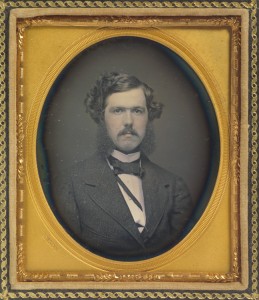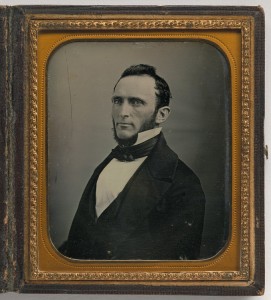D.C. Daguerreotypes
Tuesday, June 19th, 2018June 19, 2018
Last week, on June 15, a special exhibit called “Daguerreotypes: Five Decades of Collecting” opened at the Smithsonian Institution’s National Portrait Gallery in Washington, D.C. Daguerreotypes were the first practical, popular method of photography. The word daguerreotype also refers to the photographs produced by this process. The National Portrait Gallery’s daguerreotype exhibit runs until June 2, 2019, and is part of a 50th anniversary program celebrating the museum’s opening in 1968. The National Portrait Gallery exhibits likenesses of people who have contributed significantly to the history, development, and culture of the United States.

This daguerreotype of Chester Arthur was made while he was a partner in a New York City law firm in 1858, 23 years before he became president of the United States. Credit: National Portrait Gallery, Smithsonian Institution
Daguerreotypes are named for Louis J. M. Daguerre, a French stage designer and painter who perfected the photographic process in 1837. Daguerre’s process involved treating a thin sheet of silver-plated copper with fumes from crystals of iodine to make the silver plating sensitive to light. The sheet was then placed inside a camera and exposed to light through the camera lens for 5 to 40 minutes. After the sheet was removed from the camera, it was developed by vapors from heated mercury. The mercury combined with the silver at the points where it had been affected by light, and formed a highly detailed image. The image was then fixed (made permanent) by treating the sheet with sodium thiosulfate.

This daguerreotype of Thomas Jackson was made while he was a faculty member at the Virginia Military Institute in 1855, six years before he gained the nickname “Stonewall” at the First Battle of Bull Run early in the American Civil War (1861-1865). Credit: National Portrait Gallery, Smithsonian Institution
Daguerre first published a description of his process in 1839. The process was soon improved by other inventors. By 1841, for example, the exposure time for the photographs had been reduced to less than a minute. Daguerreotype portraits were tremendously popular during the 1840′s and 1850′s, especially in the United States. The daguerreotype was eventually replaced by other processes. People now collect daguerreotypes of particular beauty or unusual subject matter.
The National Portrait Gallery’s daguerreotype collection includes the portraits above of Chester Arthur and Stonewall Jackson, as well as such iconic 1800′s figures as showman P. T. Barnum, activist and reformer Dorothea Dix, and author Harriet Beecher Stowe.


